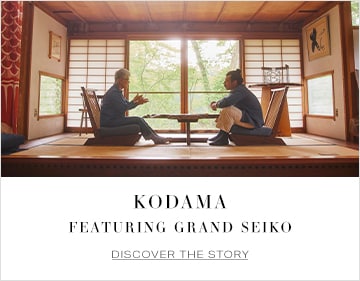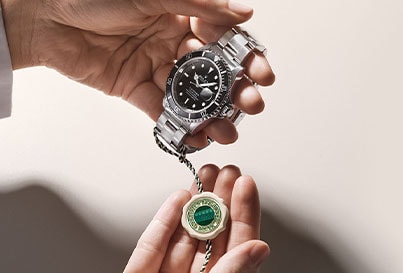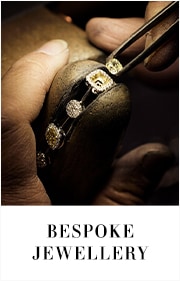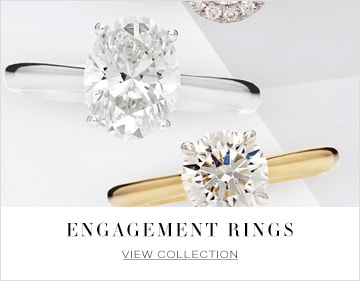-
Watches
By Category
Anytime. Anywhere.
By Collection
By Brand
-
Rolex
By Category
By Collection
- Rolex Certified Pre-Owned
- Pre-Owned & Vintage
-
Brands
Watch Brands
Jewelry Brands
-
Jewelry
By Metal
By Gemstone
By Collection
By Brand
-
Engagement
By MetalBy StyleBy Cut/ShapeBuild Your Ring
-
Wedding
By MetalWedding JewelryEditorial
- Sale
-
Sell Your Watch
Sell Your Watch
We will expertly assess your watch and offer you
a competitive and accurate valuation for the
watch you wish to sell to us.Free valuation by our experts
Unrivalled knowledge & expertise
Competitive prices offeredBrands we buy
A. Lange & SohneAudemars PiguetBlancpainBreguetBreitlingCartierIWC SchaffhausenJaeger-LeCoultreLonginesOMEGAPatek PhilippeRolexHeuerTudorVacheron Constantin - Stores
- Shop by Category
-
Watches
- Back
- Shop All Watches
- By Category
- Anytime. Anywhere.
- By Collection
-
By Brand
- Rolex
- Angelus
- Arnold & Son
- Berd Vay'e
- Blancpain
- Bovet
- Breitling
- BVLGARI
- Cartier
- DOXA
- Girard-Perregaux
- Grand Seiko
- Hamilton
- Hublot
- ID Genève
- IWC Schaffhausen
- Jacob & Co
- L’epee 1839
- Longines
- Luminox
- Nivada Grenchen
- OMEGA
- Oris
- Panerai
- QLOCKTWO
- Rado
- Raymond Weil
- Reservoir
- Speake Marin
- TAG Heuer
- Tissot
- Tudor
- Ulysse Nardin
- William Wood Watches
- WOLF
- Zenith
- Rolex
- Rolex Certified Pre-Owned
- Certified Pre-Owned
-
Brands
- Back
- View All Brands
-
A-Z
- Rolex
- Angelus
- Arnold & Son
- Berd Vay'e
- Bijoux Birks
- Blancpain
- Bovet
- Breitling
- BVLGARI
- Carlex
- Cartier
- CHANEL
- Di Modolo
- Dinh Van
- DOXA
- FOPE
- Girard-Perregaux
- Goshwara
- Grand Seiko
- Gucci
- Hamilton
- Hearts on Fire
- Hublot
- ID Genève
- Ippolita
- IWC Schaffhausen
- Jacob & Co
- J Fine
- L’epee 1839
- Longines
- Luminox
- Mappin & Webb
- Marco Bicego
- Massena LAB
- Mayors
- Messika
- Mikimoto
- Nivada Grenchen
- Nouvel Heritage
- OMEGA
- Oris
- Panerai
- Parmigiani Fleurier
- Paul Morelli
- Pasquale Bruni
- Penny Preville
- Persée
- Pomellato
- QLOCKTWO
- Rado
- Raymond Weil
- Reservoir
- Roberto Coin
- Royal Asscher
- Serafino Consoli
- Speake Marin
- Tabayer
- TAG Heuer
- Tissot
- Tudor
- Ulysse Nardin
- Uneek
- William Wood Watches
- WOLF
- Zenith
- Jewelry
- Engagement
- Wedding
- Sale
- Sell Your Watch
- Stores
- My Account
- Wishlist
- Store Finder
- Request an Appointment
- Help & Support
Are in-house movements always better? A debate between Alex Doak and Timothy Barber
By Sarah Jayne Potter | 3 minute read
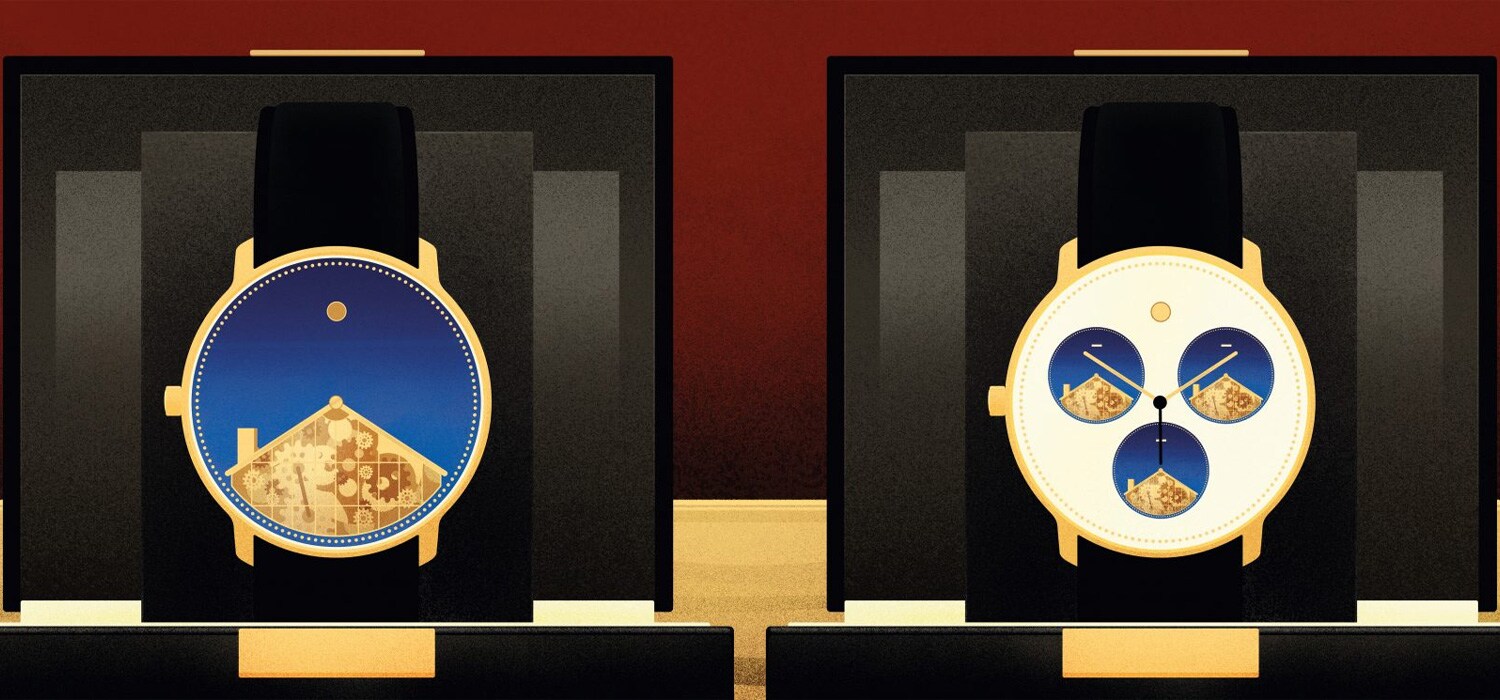
Has the inexorable rise of the manufacture-made movement delivered improvements in quality? Or is it all about marketing and kudos? Two eminent watch writers, Timothy Barber and Alex Doak, offer their conflicting views. Which do you agree with?
THE CASE FOR
Watches are a lot better made than they used to be. So are cars. So are chairs. So are my poached eggs – since I learned over time that using the freshest eggs, adding a dash of vinegar, decanting the egg into a ramekin before pouring it into the water and serving it on sourdough bread resulted in something that didn’t just fill my stomach but made me immensely happy.
And that’s what an in-house movement does for a watch. It means that your ticker is not just the product of average ingredients smashed together. This is what the Swatch Group’s Nicolas G Hayek realised back in 2002, when he went to war with the industry by announcing a plan to restrict the sale of generic movements to third-party watch brands by the Group’s ETA movement-making subsidiary.
To create a real future, to make a case for itself in a world where perfect timekeeping came cheap, Swiss watchmaking needed to elevate every element of its craft, and brands needed to activate every facet of their ingenuity and creativity. It was the move to in-house movements that attached jetpacks to Swiss watchmaking and sent it into the stratosphere.
Of course, what actually constitutes an ‘in-house’ movement is much debated. But while the many repercussions of Hayek’s 2002 move are still being felt across the industry, it did instigate investment, research, brave decision-making, furious competition and new technological developments. And it has ultimately led to a new generation of movements – in-house, proprietary, manufacture-made, whatever you want to call them – that are better made than previously, with better service intervals, better dependability, greater bang-for-buck, and offering a tempting mix of prestige, fascination and passion all baked in. Just like my eggs.
CREDIT: Timothy Barber is a writer and editor whose work has appeared in The Telegraph, The Financial Times, WiredandQP
THE CASE AGAINST
Why are we seeing high-end watchmakers supplementing ‘manufacture’ supercar movements with less glamorous base movements – described by some as ‘tractors’? And why are mid-luxury brands investing tens of millions of Swiss francs in setting up factories in the first place, to achieve the same?
The answer to both questions is that the Swatch Group was uncomfortable being the only ‘tractor’ builder out there, threatening to throttle its own supply back in 2002. Why should it spend millions constantly refining its go-to workhorses, so other brands could treat its ETA factory like a ‘supermarket’ instead of investing in their own innovation?
But the trouble with buying CNC machines and employing boffins to see PR brownie points and freedom from ETA is the risk that you’ll manufacture a tractor that stalls. After all, you can’t stick a movement on a testbed and accelerate through a lifetime’s performance, as with a new car engine.
ETA’s unglamorously named 2824 and 2892 movements date from the 1950s and 1970s – I think we’d have noticed any glitches by now. Moreover, they’ve enjoyed a certain amount of evolution, such as the Etachron regulator assembly and soonto-roll-out Nivachron antimagnetic hairspring. Even the estimable Rolex only uses a handful of base movements – nipped and tucked with ‘marginal gains’, to borrow a phrase from legendary British cycling coach Sir Dave Brailsford.
And if, with time, the new wave of ‘in-house’ tractors prove to be just as trustworthy as the classics, why pay a premium for something that looks just as industrial? Why not save some more and invest in something that has passed through an additional workshop, found only at the true manufactures – a workshop with a door marked ‘Finissage’.
CREDIT: Alex Doak is a watch journalist whose work has appeared in The Telegraph, Mr Porter and Men’s Health
